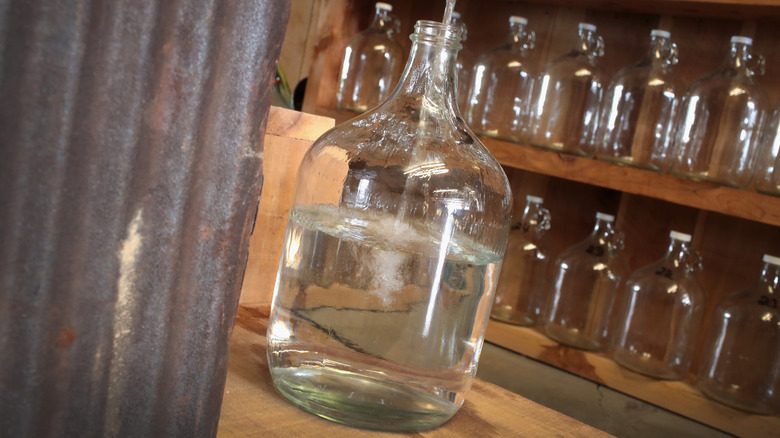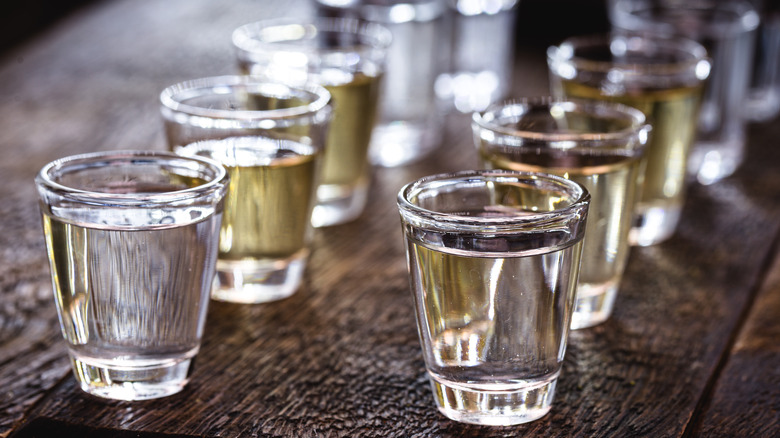Despite Popular Belief, Whiskey Is Clear Before Meeting The Barrel
When we describe whiskey as a "complex" drink, we mean this in more ways than just in the flavor profiles or the colors. It's a complex drink down to its production process. Whiskey undergoes sophisticated distilling steps where every ounce of ingredient and mote of air are under scrutiny by distillers. That intense process ensures the most flavorful blend that ages as gracefully as possible. As it goes through these steps, the whiskey changes, developing its unique character. Among those changes is whiskey taking on its golden color that we love in the final bottle.
It's true; upon first distillation, whiskey doesn't have that golden tone people associate with whiskey. Rather, it emerges from the still as a clear, colorless liquid. This type of whiskey is known as "white whiskey" or "white dog." The transformation from this clear spirit to the rich colors we recognize in whiskey bottles is a result of its interaction with wooden barrels during the aging process.
When people store whiskey in these toasted or charred oak barrels, the wood and its whiskey content interact. As time passes, the wood releases chemicals like lignin, tannins, and vanillin. into the whiskey. These compounds not only give the whiskey its color but also create the distinctive flavors that make whiskey famous. The longer the whiskey sits in the barrel, the darker it gets and the richer its flavors become.
What does white whiskey taste like?
White whiskey tastes nothing like the aged whiskey or robust bourbon you normally find on the shelves. Instead of having an oak body and various pleasant finishing notes like vanilla and spices, white whiskey has an immensely strong grain-like flavor. Remember, white whiskey has not gone through the aging process. It's not wrong to describe it as distilled grain juice.
The exact flavor of the whiskey can differ depending on the grain the distiller uses during the distillation process. As a general rule, without the influence of the wood barrel, the flavor of the grain will always come out first. For example, corn white whiskeys can taste "aggressively" like fresh corn ears, with finishing flashes of vanilla and a faint sweetness from the remaining sugar. On the other hand, oat white whiskey tastes just like oatmeal, from the aroma to the finish. However, some white oat whiskeys surprise you with "floral" and "vanilla-like" hints amid their raw oat essence. The rawness isn't necessarily a drawback. Some people genuinely appreciate this unique flavor compared to the more refined characters of properly-aged whiskeys.
Besides sipping it straight, white whiskey can be fun to use as a cocktail ingredient. Its distinctive grainy character can create a tasty sour cocktail, like the White Dog Sour!

